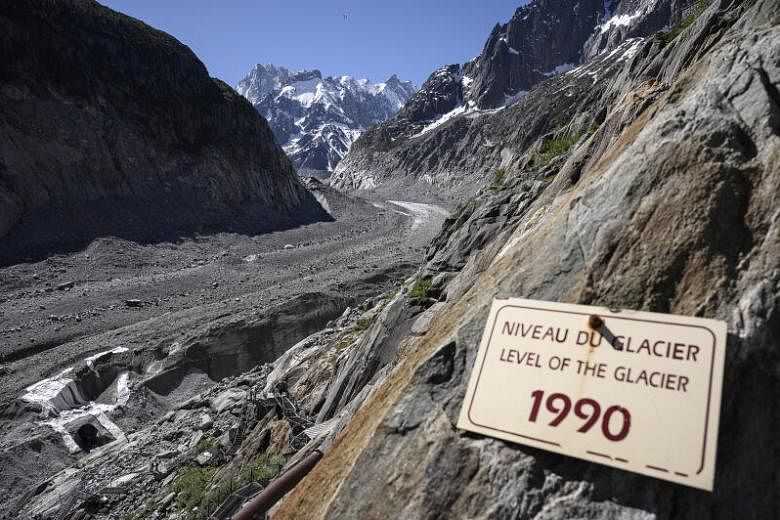SINGAPORE - Across the globe, glaciers are in trouble. Global warming is speeding up melting and disrupting weather patterns that can bring too much or too little rain to the mountains.
Billions of people, especially in Asia, rely on these vast storehouses of ice for drinking water, irrigation and hydropower.
Accelerated melting increases river flows and heightens the risks of floods. Rapid melting of glaciers from China to Greenland and Antarctica also increases sea levels, threatening low-lying coastlines globally.
In one example, glaciers in China's bleak Qilian mountains high on the Tibetan plateau are disappearing at an alarming rate, raising the prospect of crippling, long-term water shortages, scientists say.
The largest glacier in the 800km mountain chain on the arid north-eastern edge of the plateau has retreated about 450m the 1950s, when researchers set up China's first monitoring station to study it. The 20 sq km glacier, known as Laohugou No. 12, has shrunk by about 7 per cent since measurements began, with melting accelerating in recent years, scientists say.
But it is not just the distance that glaciers are retreating. Just as concerning is the overall loss of mass, or thickness. Laohugou No 12, for instance, has lost 13m of ice, Dr Qin Xiang, the director at the monitoring station, told Reuters.
Since the 1950s, average temperatures in the area have risen about 1.5 deg C, Dr Qin said, and with no sign of an end to warming, the outlook is grim for the 2,684 glaciers in the Qilian range. Across the mountains, glacier retreat was 50 per cent faster in 1990-2010 than it was from 1956 to 1990, data from the China Academy of Sciences shows.
The fate of many other glaciers in the region is bleak, too.
The Tibetan plateau and the Himalaya-Hindu Kush mountain range are part of what is known as the world's Third Pole because the huge ice fields contain the largest reserve of fresh water outside the polar regions.
This region is the source of 10 major river systems, including the Brahmaputra, Ganges, Indus and Mekong, which are economic engines of the region.
The UN climate panel said in a landmark 2019 report the high mountain glaciers in the Hindu Kush Himalaya region, which provide water for about two billion people, are melting quickly and this could accelerate unless mankind makes deep cuts in greenhouse gas emissions.
The danger is that rapid melting will, initially, increase water flows in the next few decades. Meltwater feeding the rivers would then decline as the glaciers shrink.
That could trigger unrest as nations clash over water supplies.
In Europe, glaciers are also shrinking at shocking rates. Switzerland has lost more than 500 glaciers since 1900. Mer de Glace, the longest glacier in France, has receded more than 2km up the mountain since the 19th century, with the pace of melting picking up in recent decades.
According to a New Scientist report in 2019, visitors exiting a nearby train station could descend down three steps to reach the glacier in 1988. There are 580 steps down to the glacier by 2019.
Of even greater concern are the glaciers in Greenland and Antarctica, which could push up sea levels by many metres in the coming centuries if the world stays on track to warm at least 3 deg C by the end of this century.
Rapid melting of ice sheets in West Antarctica is already speeding up glaciers there, while scientists say Greenland is starting to melt faster than at any time in the past 12,000 years. Last year, Greenland set a new record for ice loss, shedding the most mass from its giant ice sheet in any year since at least 1948.
While the rate of melting was slower this year, a big chunk of ice broke away from the Arctic's largest remaining ice shelf - 79N, or Nioghalvfjerdsfjorden - in north-east Greenland in June and July.
The ejected section covered about 110 sq km, or about a seventh the size of Singapore.





